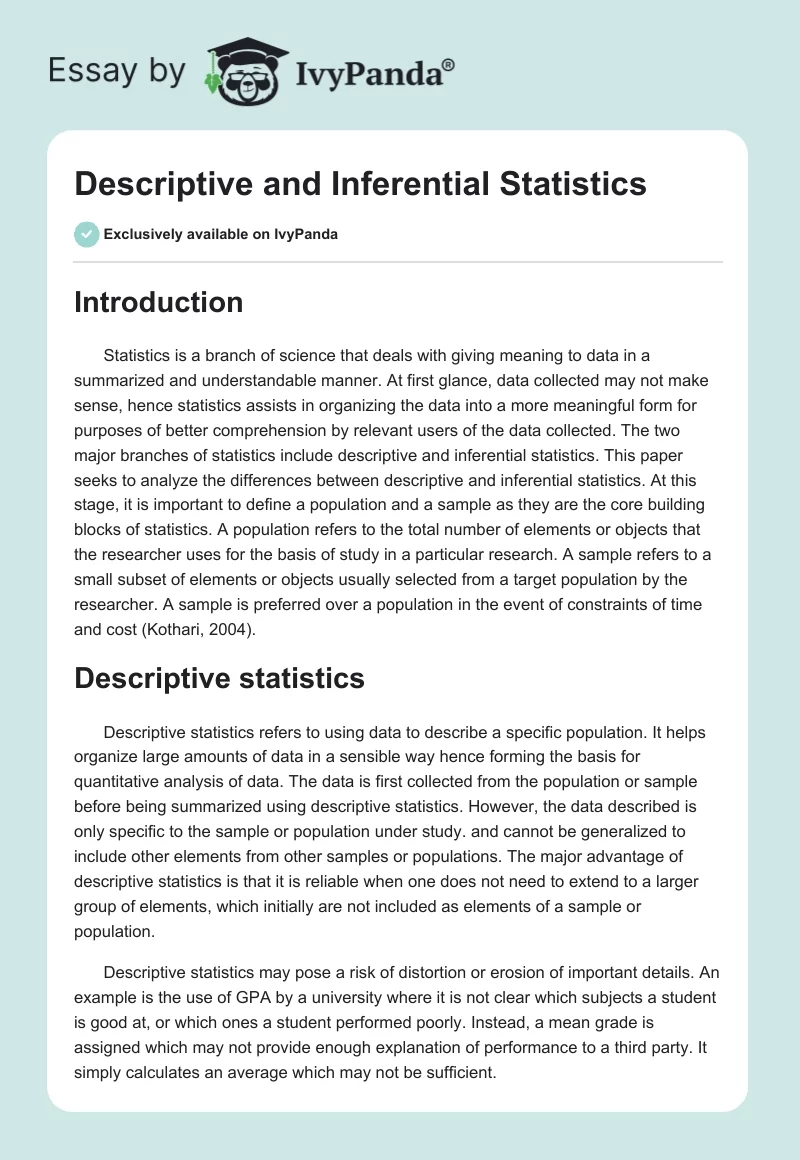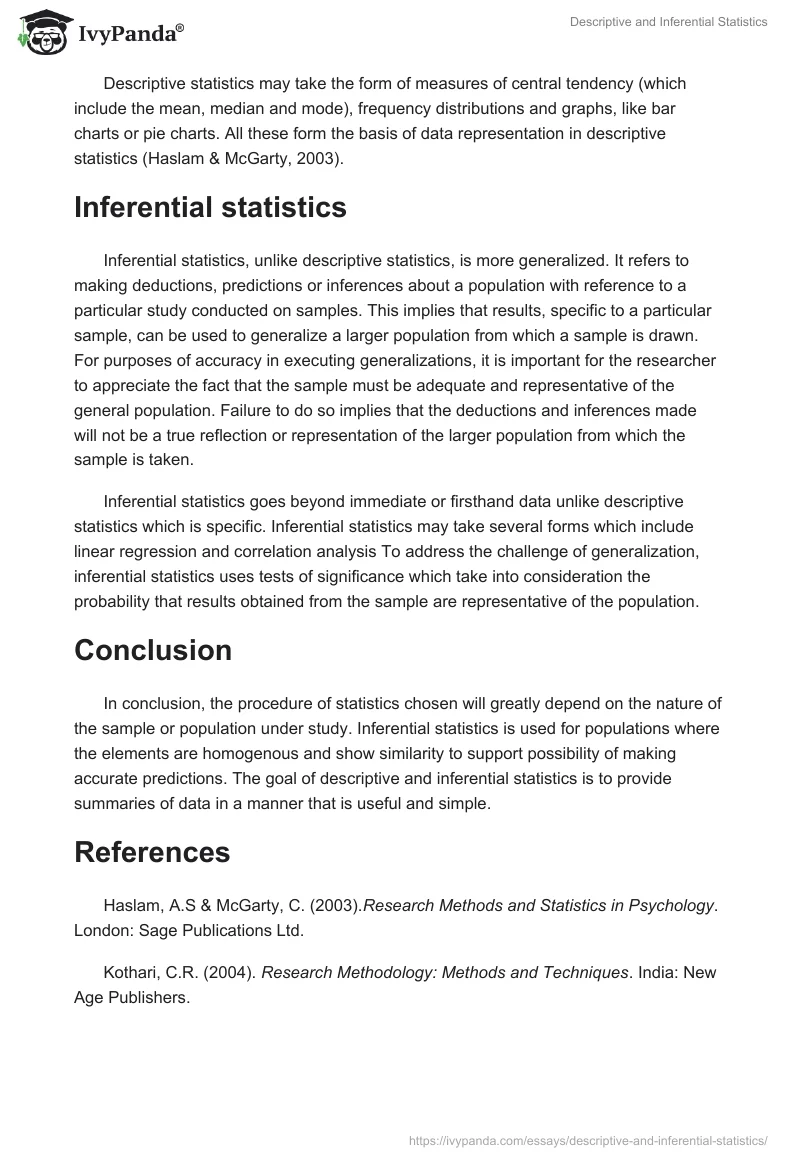Introduction
Statistics is a branch of science that deals with giving meaning to data in a summarized and understandable manner. At first glance, data collected may not make sense, hence statistics assists in organizing the data into a more meaningful form for purposes of better comprehension by relevant users of the data collected. The two major branches of statistics include descriptive and inferential statistics. This paper seeks to analyze the differences between descriptive and inferential statistics. At this stage, it is important to define a population and a sample as they are the core building blocks of statistics. A population refers to the total number of elements or objects that the researcher uses for the basis of study in a particular research. A sample refers to a small subset of elements or objects usually selected from a target population by the researcher. A sample is preferred over a population in the event of constraints of time and cost (Kothari, 2004).
Descriptive statistics
Descriptive statistics refers to using data to describe a specific population. It helps organize large amounts of data in a sensible way hence forming the basis for quantitative analysis of data. The data is first collected from the population or sample before being summarized using descriptive statistics. However, the data described is only specific to the sample or population under study. and cannot be generalized to include other elements from other samples or populations. The major advantage of descriptive statistics is that it is reliable when one does not need to extend to a larger group of elements, which initially are not included as elements of a sample or population.
Descriptive statistics may pose a risk of distortion or erosion of important details. An example is the use of GPA by a university where it is not clear which subjects a student is good at, or which ones a student performed poorly. Instead, a mean grade is assigned which may not provide enough explanation of performance to a third party. It simply calculates an average which may not be sufficient.
Descriptive statistics may take the form of measures of central tendency (which include the mean, median and mode), frequency distributions and graphs, like bar charts or pie charts. All these form the basis of data representation in descriptive statistics (Haslam & McGarty, 2003).
Inferential statistics
Inferential statistics, unlike descriptive statistics, is more generalized. It refers to making deductions, predictions or inferences about a population with reference to a particular study conducted on samples. This implies that results, specific to a particular sample, can be used to generalize a larger population from which a sample is drawn. For purposes of accuracy in executing generalizations, it is important for the researcher to appreciate the fact that the sample must be adequate and representative of the general population. Failure to do so implies that the deductions and inferences made will not be a true reflection or representation of the larger population from which the sample is taken.
Inferential statistics goes beyond immediate or firsthand data unlike descriptive statistics which is specific. Inferential statistics may take several forms which include linear regression and correlation analysis To address the challenge of generalization, inferential statistics uses tests of significance which take into consideration the probability that results obtained from the sample are representative of the population.
Conclusion
In conclusion, the procedure of statistics chosen will greatly depend on the nature of the sample or population under study. Inferential statistics is used for populations where the elements are homogenous and show similarity to support possibility of making accurate predictions. The goal of descriptive and inferential statistics is to provide summaries of data in a manner that is useful and simple.
References
Haslam, A.S & McGarty, C. (2003).Research Methods and Statistics in Psychology. London: Sage Publications Ltd.
Kothari, C.R. (2004). Research Methodology: Methods and Techniques. India: New Age Publishers.


